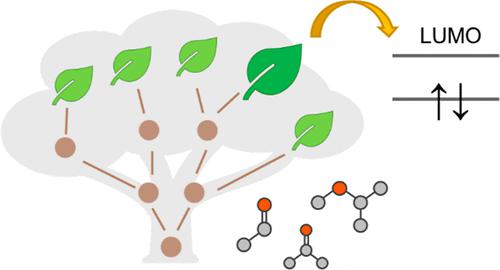当前位置:
X-MOL 学术
›
J. Am. Chem. Soc.
›
论文详情
Our official English website, www.x-mol.net, welcomes your
feedback! (Note: you will need to create a separate account there.)
Data-Driven Insight into the Reductive Stability of Ion–Solvent Complexes in Lithium Battery Electrolytes
Journal of the American Chemical Society ( IF 14.4 ) Pub Date : 2023-09-13 , DOI: 10.1021/jacs.3c08346 Yu-Chen Gao 1 , Nan Yao 1 , Xiang Chen 1 , Legeng Yu 1 , Rui Zhang 2 , Qiang Zhang 1
Journal of the American Chemical Society ( IF 14.4 ) Pub Date : 2023-09-13 , DOI: 10.1021/jacs.3c08346 Yu-Chen Gao 1 , Nan Yao 1 , Xiang Chen 1 , Legeng Yu 1 , Rui Zhang 2 , Qiang Zhang 1
Affiliation

|
Lithium (Li) metal batteries (LMBs) are regarded as one of the most promising energy storage systems due to their ultrahigh theoretical energy density. However, the high reactivity of the Li anodes leads to the decomposition of the electrolytes, presenting a huge impediment to the practical application of LMBs. The routine trial-and-error methods are inefficient in designing highly stable solvent molecules for the Li metal anode. Herein, a data-driven approach is proposed to probe the origin of the reductive stability of solvents and accelerate the molecular design for advanced electrolytes. A large database of potential solvent molecules is first constructed using a graph theory-based algorithm and then comprehensively investigated by both first-principles calculations and machine learning (ML) methods. The reductive stability of 99% of the electrolytes decreases under the dominance of ion–solvent complexes, according to the analysis of the lowest unoccupied molecular orbital (LUMO). The LUMO energy level is related to the binding energy, bond length, and orbital ratio factors. An interpretable ML method based on Shapley additive explanations identifies the dipole moment and molecular radius as the most critical descriptors affecting the reductive stability of coordinated solvents. This work not only affords fruitful data-driven insight into the ion–solvent chemistry but also unveils the critical molecular descriptors in regulating the solvent’s reductive stability, which accelerates the rational design of advanced electrolyte molecules for next-generation Li batteries.
中文翻译:

通过数据驱动洞察锂电池电解质中离子溶剂络合物的还原稳定性
锂(Li)金属电池(LMB)因其超高的理论能量密度而被认为是最有前途的储能系统之一。然而,Li负极的高反应活性会导致电解质分解,这给LMB的实际应用带来了巨大障碍。常规的试错方法在设计用于锂金属阳极的高度稳定的溶剂分子时效率低下。在此,提出了一种数据驱动的方法来探究溶剂还原稳定性的起源并加速先进电解质的分子设计。首先使用基于图论的算法构建潜在溶剂分子的大型数据库,然后通过第一原理计算和机器学习(ML)方法进行全面研究。根据最低未占分子轨道(LUMO)的分析,在离子-溶剂复合物的主导下,99%的电解质的还原稳定性降低。LUMO能级与结合能、键长和轨道比因素有关。基于 Shapley 加法解释的可解释 ML 方法将偶极矩和分子半径确定为影响配位溶剂还原稳定性的最关键描述符。这项工作不仅为离子溶剂化学提供了富有成效的数据驱动的见解,而且还揭示了调节溶剂还原稳定性的关键分子描述符,从而加速了下一代锂电池先进电解质分子的合理设计。
更新日期:2023-09-13
中文翻译:

通过数据驱动洞察锂电池电解质中离子溶剂络合物的还原稳定性
锂(Li)金属电池(LMB)因其超高的理论能量密度而被认为是最有前途的储能系统之一。然而,Li负极的高反应活性会导致电解质分解,这给LMB的实际应用带来了巨大障碍。常规的试错方法在设计用于锂金属阳极的高度稳定的溶剂分子时效率低下。在此,提出了一种数据驱动的方法来探究溶剂还原稳定性的起源并加速先进电解质的分子设计。首先使用基于图论的算法构建潜在溶剂分子的大型数据库,然后通过第一原理计算和机器学习(ML)方法进行全面研究。根据最低未占分子轨道(LUMO)的分析,在离子-溶剂复合物的主导下,99%的电解质的还原稳定性降低。LUMO能级与结合能、键长和轨道比因素有关。基于 Shapley 加法解释的可解释 ML 方法将偶极矩和分子半径确定为影响配位溶剂还原稳定性的最关键描述符。这项工作不仅为离子溶剂化学提供了富有成效的数据驱动的见解,而且还揭示了调节溶剂还原稳定性的关键分子描述符,从而加速了下一代锂电池先进电解质分子的合理设计。

































 京公网安备 11010802027423号
京公网安备 11010802027423号